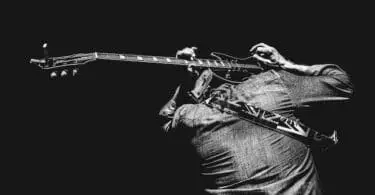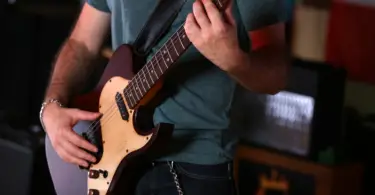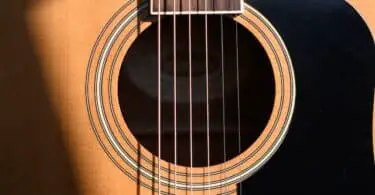Typically, people would not put much thought into how to hold an instrument. When playing the guitar, you automatically know what to do without thinking too much about it. Of course, technical things can be improved upon to make your overall experience better; this is true with any physical activity.
Good guitarists invest time in developing habits that will help them play or perform effectively, and you should do the same too! So what is the proper way to hold a guitar? This guide will provide you with general strategies on how guitarists tend to hold their guitars when playing chords. Let’s get started!
Quick Links
Proper Placement of Right Arm
First, let’s look at where to place your right arm when you are holding the guitar. The main goal is to get your fretting hand fingers in position to easily play chords while leaving enough room to move your fingers up and down the neck.
Elbow
The elbow should be placed to the side of your body and near enough so that you can reach nearly all the frets without having to shift your arm too much — you want your elbow to be directly in line with your fretting hand.
Wrist
Keep your wrist straight. Some guitarists feel more comfortable by slightly bending their wrists to keep them off the guitar for comfort reasons.
This is acceptable, but I have found that you should try to keep it straight, so you don’t accidentally hit a note when playing chords.
Proper Placement of Left Hand (Fretting Hand)
Now that your elbow and wrist are in position let’s move onto your hand. You need to concentrate on two major things here– keeping your fingers curved and making sure that you have a strong grip around the neck.

Fingers
Your fingers should be slightly curved– not too much, but just enough to have control over the strings. It is crucial that you use only the fingertips instead of the whole finger– this will give you more accurate results when playing notes.
Thumb Position
The thumb should be used for support to help you with the upstrokes and downstrokes. Place it behind the neck of the guitar, maybe right above, where your thumb would naturally rest on a stable surface.
Placement on Neck
You don’t want to place your hand too high or too low on the neck– you may find yourself either accidentally hitting extra strings or missing notes. Try to get your hand in such a position that you can see all six strings clearly and easily.
Finger Picking
This is an optional thing, but if you want to fingerpick, try tucking the thumb into the palm of your hand for support.
You might not be used to it at first because it’s a bit awkward, but once you get the hang of it, your hand will be much looser and more free to move about.
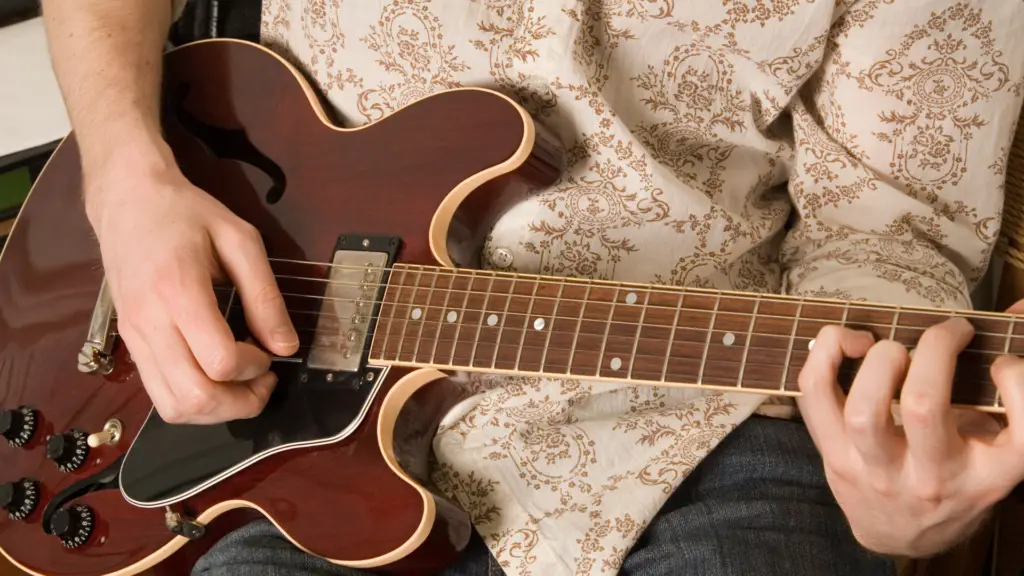
Clutching
If you’re not used to holding the guitar properly, you’ll notice that it takes a lot of strength to support its weight. The situation is even worse when you’re playing for hours, and your fingers and hands start cramping up.
However, there is an easy fix for this problem: rest the guitar on your leg. This way, you can rest your hand on your leg, making it easier to relax and play for hours.
Toe Cap
The final step is the one that will help you out the most if you have problems with cramps or discomfort. You simply need to place something on top of the protruding toe cap on the headstock. This way, your hand will rest on the guitar and not the toe cap, and it’ll be a lot easier to play for hours (and to play well).
And that’s it, pretty simple, right? Also, it is recommended to use a pick at first because it’s easy to get overwhelmed and discouraged if you’re not used to it.
The guitar has many different techniques that can be difficult if you haven’t been playing for years or decades, but use your fingers instead of a pick at first, so the learning curve is less steep.
Most Popular Types of Guitar
The guitar is a versatile instrument that can be used in various genres of music. There are many different types of guitars available today, and each has its own usage and purpose. You should consider the kind of music that you want to play before deciding on a particular model.
Acoustic Guitar
Acoustic guitars produce beautiful sounds all by themselves. They are also easier to play than electric guitars as their neck is thinner, and they have a wider neck span, which offers more comfort during extended periods of playing. Their size is also smaller, so you can carry them around easily and lay your hands on them quickly.
In addition, acoustic guitars lack the element of distortion and produce a clean, pristine, and sharp tone.
Electric Guitar
Electric guitars make use of pickups and amplifiers to produce great sound. Their wide neck span makes them harder to play than an acoustic guitar, but they are ideal for creating various sounds through different pickups, amps, or pedals. Furthermore, they can be plugged into a mixer or computer to produce a more dynamic and professional sound. Electric guitars are perfect for those who want to experiment with different sounds and create music on a more complex level.
Classical Guitar
Classical guitars have a much smaller neck span which makes them easier to hold and play. These guitars are perfect for beginners as they produce clean sounds without the need for distortion. Furthermore, since there is no fret buzz, it’s easy to focus on tuning and finger placement. They also have nylon strings which reduce soreness in fingers that usually come with playing steel-string guitars.
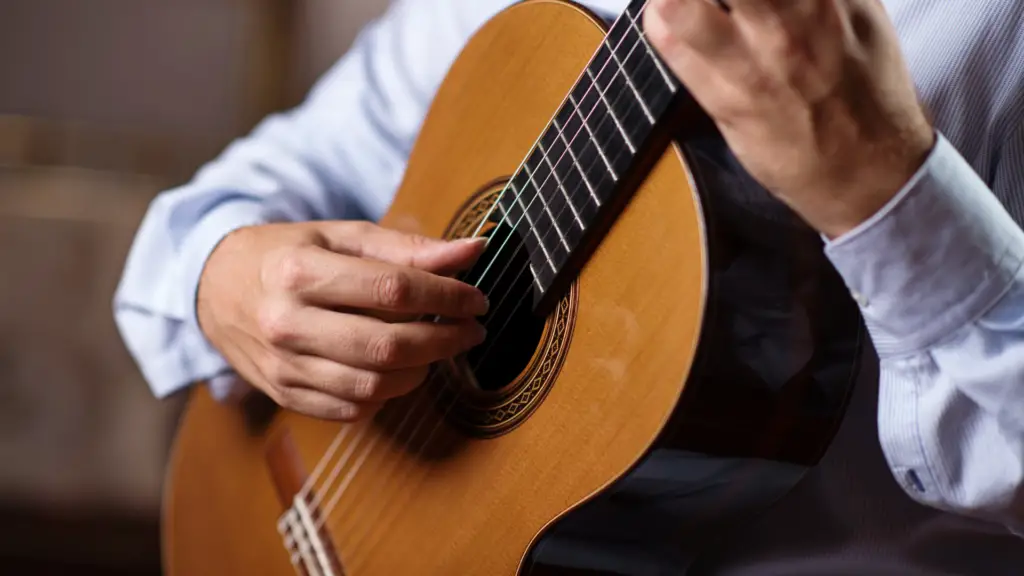
Bass Guitar
Bass guitars are played differently depending on which style of music you like to play. If you are playing metal music, gravity will not be a big problem because the bass guitar’s body is more prominent to balance itself.
However, if you are playing soft or progressive rock music, you might have to support your bass by placing your foot on the monitor or using an appropriate stand that produces good results.
Takeaway
Proper holding the guitar can assist you in developing the fundamental abilities required to perform what you want to play comfortably, swiftly, and with the appropriate technique. With a bit of time and dedication, your playing will sound so much better. Just follow through the steps above and put them into practice. Your playing will improve in no time!

